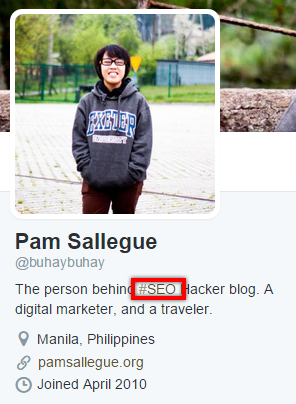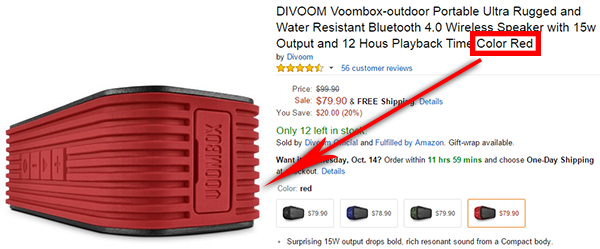The Real SEO: How to Rank in Other Search Engines
We tend to focus on Google alone. I, too, am guilty of it.
I remember when I was still in our Accounts Management department, personally replying to every inquiry we received from our services page, and I’m always excited to say “we can put you on the top of Google!”
While ranking for Google seems like the best objective – after all it’s the largest search engine, with over 3 billion searches per day – still, we can’t deny the fact that there are other search engines that have active users as well. Some of them are focused on sharing experiences, some are focused on videos, some are for B2Bs, and some are listings of products. This makes it ideal for particular websites to rank for those search engines rather than in Google alone.
You see my point?
You need to rank on Google, but you also need to optimize your website for search engines that best support your website’s niche.
If you really want to grow your traffic – and I mean the right traffic – it’s time to understand how other search engines work, how you can optimize your website or page for other search engines, and which of these search engines you should spend your time on.
How to optimize for other search engines?
1. Facebook
Note: Facebook is best for local business.
Facebook is one of the most effective ways to communicate with people, as it is an avenue to share thoughts and experiences and a means to stay connected with friends.
And more importantly for you, aside from that, Facebook is also a place to advertise, and promote your products or services.
Facebook is very helpful for entertainment businesses, and more so for local businesses. In fact, big chunks of Facebook searches are focused on finding reviews, knowing the hours of operation and recent deals or promos.
With over 1 billion searches per day and the competition getting steeper and steeper, it’s getting harder to rank in Facebook search. Good thing there are ways to optimize your page and help you rank higher, subsequently giving you more traffic to your website.
1. Put the right name
Putting the right name is very important, as Facebook is very particular with keywords. However, it doesn’t mean you need to stuff it with keywords – you don’t want to look like spam.
There are few things to remember when choosing your Facebook page’s or group’s name.
- The first word you include in your page name is what Google and Facebook will consider most important. So, if you want to target particular audience, don’t use names that are too generic.
- If you own a franchise, it’s better to put the location/branch on the name.
- If there are pages that use your name, usually those created by fans, make sure to put “official” on your Facebook page name.
2. Customize your Facebook URL
By default, your Facebook URL will be consists of numbers, like this: facebook.com/pages/businessname/123456789.
Make sure to go to Facebook Username to change your URL, and make it like this: facebook.com/businessname.
3. Don’t forget to complete all other information such as About, Mission and Description.
Like what was said previously, put the right keywords. Again, do not keyword stuff; instead, concentrate on providing information such as what your company is all about, its focus, your mission, link to your website, physical address, phone numbers, and email address.
In short, make it so easy for visitors to know you, and to reach out to you.
2. Twitter
Note: Twitter is best for entertainment businesses, and news.
I seldom use Twitter, but when I do, it’s mostly to get news and the gist of trending topics worldwide.
Like Facebook, Twitter is also a way to stay connected with friends, but mostly to be connected with celebrities, and big names like Barack Obama.
The best thing about Twitter is that it’s not so hard to optimize it. You just need to:
- Use your real name or your brand’s name.
- Come up with a short bio. Don’t forget to include proper keywords (you may also use hashtag just like what I did with my bio) and a link to your website.
- Use hashtags when tweeting. There are tools to help you choose the right hashtag, but I will recommend using RiteTag.
You may also use this guide: How to Craft Social Post that Gets 779,295 Shares in Half an Hour to know more about Twitter, and how you can gain more social shares.
3. Youtube
Note: Youtube is best for entertainment businesses, digital marketing, and videos offering life hacks.
Before, Youtube is just a place to watch music videos. But now, with increasing number of users and searches, it has become an avenue to watch almost anything under the sun.
If your business provides video tutorials, then Youtube might be the best search engine for you.
To optimize your video, take our infographic as a guide, or go to The Ultimate Youtube SEO Guide for more intensive explanation.
Continue here to view our infographic.
4. Amazon
Note: Amazon is best for ecommerce.
If you’re into ecommerce, then you should focus more on ranking for Amazon than Google.
According to The New York Times…
“In 2009, nearly a quarter of shoppers started research for an online purchase on a search engine like Google and 18 percent started on Amazon, according to a Forrester Research study. By last year, almost a third started on Amazon and just 13 percent on a search engine. Product searches on Amazon have grown 73 percent over the last year while searches on Google Shopping have been flat, according to comScore.”
If you’re aiming for your products to rank well on Amazon take these quick guide to optimizing your products page.
1. Put the right title
The purpose of your product’s title is to let buyers know what your product is all about. Many use this part to stuff keywords, but you should never do that. After all, you’re still optimizing it for people. So instead, use the title to input your:
- Brand
- Description
- Material or key ingredient
- Size
- Quantity
- Color
2. Maximize search terms
Many take advantage of this field by putting all the possible keywords that users may be searching. But the truth is it’s not helping at all with ranking for Amazon; it may even harm you by looking spammy.
Instead of making the “search terms” a place to keyword stuff – as if you’re putting tags – consider these tips.
- Each of the field (there are five of it) accept 50 characters each. Maximize it by not repeating any words.
- Do not use comma, as it will only be ignored.
- It’s unnecessary to put commonly misspelled words, and multiple variations of the same word.
3. Include the best photos
Photo is not a ranking factor, but if you want to increase your conversions, it’s best to include photos that will best describe your products.
- Choose high-res images.
- Include features in your images.
- Be accurate, especially with the colors. If you put red in the title, then your photo should also be a red product.
5. LinkedIn
For freelancers and B2B providers, I can say that it’s best to optimize for LinkedIn. Companies that are looking to hire people usually use LinkedIn to search potential applicants.
Keyword is very big deal when it comes to LinkedIn, because unlike other search engines, it bolds all keywords searched in the results, plus it highlights all the keywords on the person’s or company’s’ profile page.
1. Optimize your profile
When optimizing your profile, always include your name, job description or details about the company, your current job, and your past job if you’re an individual.
Include all the necessary keywords when writing your job description. If you’re a company, make sure to explain what your company is all about in the description section.
2. Choose the best profile photo
It should be your brand’s logo.
3. Include video
What I like about LinkedIn is that you can include video in your description. You may use a video to further explain what your company is all about, or to also use this space to showcase your team.
6. Instagram
Note: Instagram is best for local business such as restaurants, and apparel.
I’m a big user of Instagram. Aside from helping me share my experiences through photos, I also use it to search for places to eat.
Comodo, a restaurant located in New York City has been very successful with their Instagram marketing since they launched Instagram Menu.
The newly launched Cómodo needed to differentiate from the other 18,000 restaurants in New York City. They asked us to come up with a social media campaign that would generate buzz around the restaurant, promote their cuisine and speak to their playful personality.
IDEA
People love to Instagram their food, so we decided to use their photos to create our very own Instagram Menu. We printed the #ComodoMenu hashtag on our real menu and invited guests to add pictures of our courses as well as browse existing photos for inspiration.
RESULTS
With $0 budget, the campaign generated +280 million earned media impressions and was featured in top lifestyle, news and business outlets, as well as TV and radio stations across the world. Mashable named Cómodo next to Red Bull and Tiffany & Co. among the top brands that understand marketing on Instagram. The idea was picked up by restaurants worldwide asthey created their own Instagram account. Cómodo, meanwhile, remained on top of their game, as they received table reservations for up to 5 months in advance.[bqc]
If you can’t come up with great strategy like this, don’t worry as there are still ways to optimize for Instagram search.
1. Do the basics
Make sure to put your brand name, a brief description of what your company does, a link to your website, phone number, and upload the best photo of your brand (i.e your logo).
2. Upload compelling images or videos with proper caption and hashtags
While you can upload any images you like, if you want to attract users, then it’s best to upload your best shots.
What’s good with Instagram is that it comes with filters that you can use, and basic editing features like contrast, brightness and even cropping.
Together with it should be your best caption with proper hashtags. Unlike with Twitter that you only have 140 characters to fit in your tweet and hashtags, with Instagram, you can go up to 2200 characters (more than enough to market the hell out of your image) – meaning you can also put all the necessary hashtags together with your caption.
Don’t worry about putting long captions, so long as it’s relevant, then you’re safe. In fact, Instagram’s posts always have long captions.
Final thought!
If your goal is to direct the right visitors to your website, make sure to put your website link in the right accounts or pages as well.
It doesn’t help with the PageRank juice because links planted on these search engines are usually have nofollow attributes, but presence is much more important.
If your brand is ranking in the right search engine, you can be sure that you are also leading the right audience to your website, thus higher conversion.










